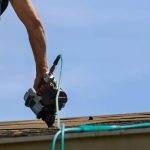Structural integrity inspection is an essential process in the construction industry, particularly in densely populated regions like Singapore. This procedure ensures that buildings and infrastructure are safe, durable, and fit for purpose. It involves examining the physical condition of structures to identify any potential weaknesses or defects that could compromise their stability and safety.
In Singapore, structural integrity inspections are governed by strict regulations set by the Building and Construction Authority (BCA). These guidelines stipulate that all buildings taller than 13 meters must undergo periodic structural inspections every ten years. For older buildings aged 30 years and above, these checks should be carried out every five years.
The inspection process typically begins with a visual assessment where inspectors look for visible signs of damage or wear such as cracks, corrosion, water seepage or deformation. They also check for irregularities in the building’s design that might affect its stability under certain conditions like earthquakes or strong winds.
Following this initial assessment, more detailed investigations may be conducted if necessary. These could involve non-destructive testing techniques such as ground-penetrating radar (GPR) to detect hidden flaws within concrete structures or ultrasonic testing to measure the thickness of steel components. In some cases, samples may be taken from contact us today the building for laboratory analysis to determine material properties like strength and durability.
Once the inspection is complete, a report detailing the findings is prepared. This will include recommendations on any repairs or maintenance work needed to rectify identified issues and preserve structural integrity. If serious defects are found which pose immediate danger, urgent action must be taken to ensure public safety.
It’s important to note that while regular inspections are crucial for maintaining structural integrity over time; they can’t replace good design and quality construction practices initially implemented during a building’s creation phase. Therefore stakeholders involved in constructing new buildings must adhere strictly not only to BCA regulations but also international best practices regarding materials use & workmanship standards.
Furthermore, it’s essential for building owners in Singapore to engage professional engineers or specialist accredited checkers for these inspections. These professionals have the necessary expertise and experience to accurately assess structural integrity, interpret findings, and recommend appropriate remedial actions.
In conclusion, structural integrity inspection is a crucial aspect of maintaining safe and durable buildings in Singapore. It involves a comprehensive process of visual assessment, detailed investigation, reporting, and follow-up action as required. By adhering to BCA regulations and engaging competent professionals for inspections, building owners can ensure their structures remain safe and fit for purpose throughout their lifespan.



